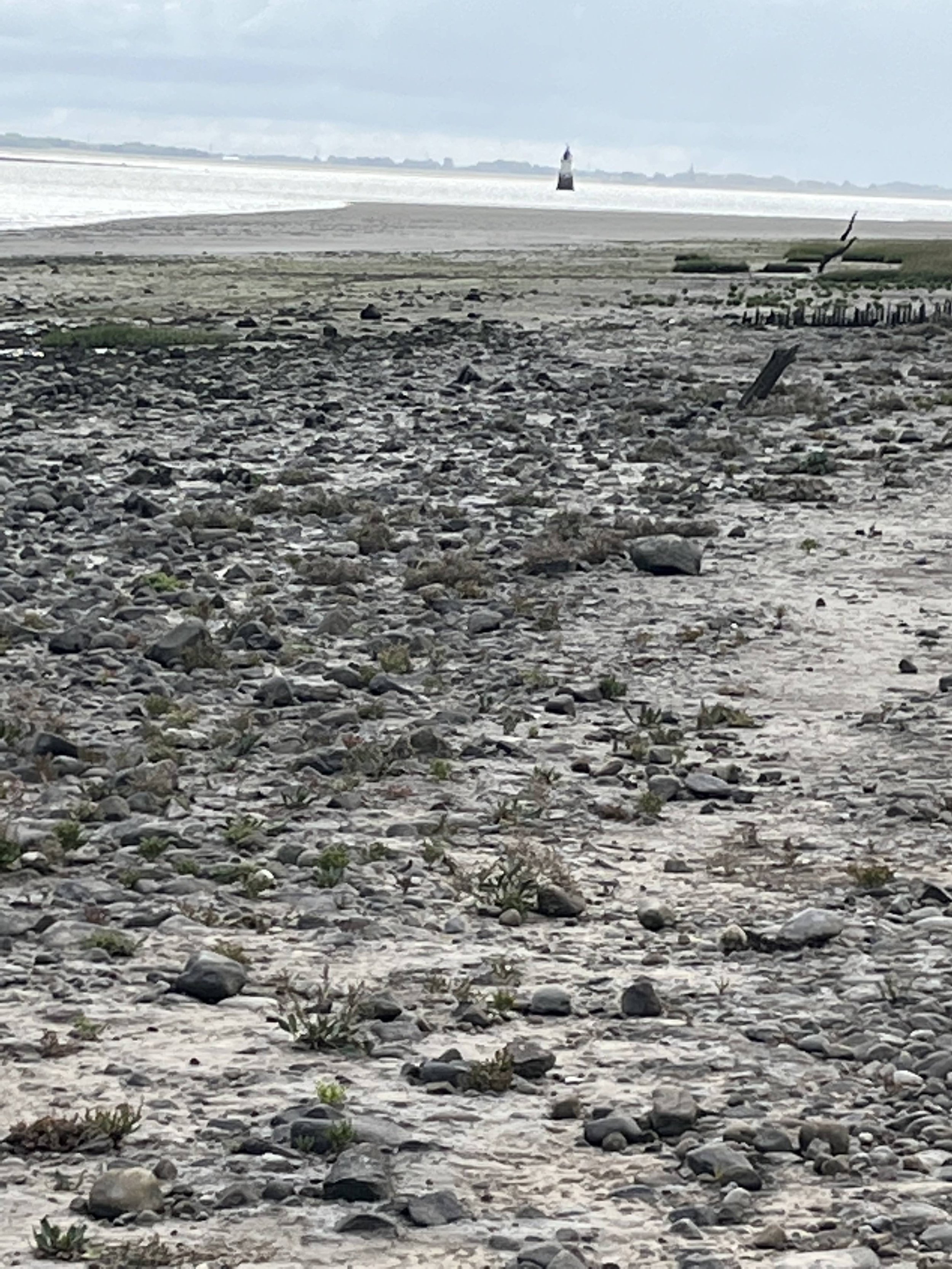The ‘Powder Post’
From the collection of Elizabeth Gilchrist
Taken in May 2020, this splendid photograph shows the remains of the ‘Powder Post’. Not so long ago the post was visible at every low tide. Today, only in the rare event of the top layer of sand being scoured away does the stump appear.
This is the best known - if least visible - of the series of important and historic posts on the shore by the Old Hall.
Oral history is certain the post marked the point in the estuary where boats carrying gunpowder – destined to load or unload at Sunderland Point - could go no further.
It certainly sounds right. Vessels from Lancaster throughout the 18th and 19th centuries faced perilous journeys especially in the transatlantic and Baltic trade. Not only attack from pirates but voyages during wartime were especially hazardous with the risk of capture as a ‘prize’.
During the Napoleonic wars (1803-1815) vessels from Lancaster and other west coast British ports would gather at Cork in Ireland and sail in convoy across the Atlantic.
And they did carry guns and powder.
Reproduced with the permission of the Lancaster Guardian
These are examples from 1801 to 1811 of adverts seeking freight and passengers that were placed in the Lancaster Gazette. They all make reference to being heavily armed.
Almost a century earlier in 1715, is the well-known example of the ‘Robert’ a merchant ship trading to the Baltic belonging to Robert Lawson (of Lancaster) which was stripped of six cannons when moored at Sunderland during the first Jacobite Rebellion.
But is it fact? We scoured the record books but found no direct, original record or reference to a Powder Post.
And what about the other visible, rather mysterious posts at Hall End, what was their purpose, could they be connected to the Powder Post?
To the right of the photo, looking towards the lighthouse we can see a trio of posts, they are in line, equidistant apart and all lean towards the shore.
An alternate view of the first post closest to the river.
We asked for help. We contacted the Maritime Museum and the wise heads of the Lancaster Archaeology and Historical Society, it was convincingly suggested the posts were part of an old quay as there are similar remains at Heysham. Then we were contacted by Tim Churchill. Some years ago, Tim had researched shipping in the river and guided us to a reference in the Port Commissioners minute books dated the 18th of January 1758, it reads
‘The inhabitants of Overton and Sunderland (are) erecting a Weir from Hall End point near Sunderland down to low water mark, which if suffered to remain…will be of great prejudice and danger to ships coming up the river Loyne.'
The villagers were asked to stop forthwith, but they did not and pressed ahead. The following year they were visited by an official of the Port Commissioners – the Tonnage officer - who issued a stern written instruction to stop, which we assume they reluctantly did. Could this the origin of our posts?
Later in 1759 the Commissioners ordered a mooring post to be set down in a suitable place near the 'far house' at Sunderland. Is this the Powder Post?
Perhaps not. Tim also tells us about the Powder Stone at Lancaster. Still visible today but almost hidden under Carlisle Bridge and set into concrete, The stone marks the spot where vessels entering Lancaster had to stop and unload gunpowder. It was then stored in the Powder House situated in what we know now today as Powder House Lane. He sent us photos.
The ‘Powder Stone’ hidden under Carlisle Bridge. (From the collection of Tim Churchill)
The old Powder House in Powder House Lane, now a private residence (From the collection of Tim Churchill)
Tim also tells us he believes there was a powder stone at Glasson Dock. So, is our Powder Post a wooden forerunner for the stone in Lancaster, situated for the same logical reason. We don’t know for certain, but the opinion of generations says it is.
We express our great thanks to Tim Churchill who supplied valuable information and for permission to use the photographs.








